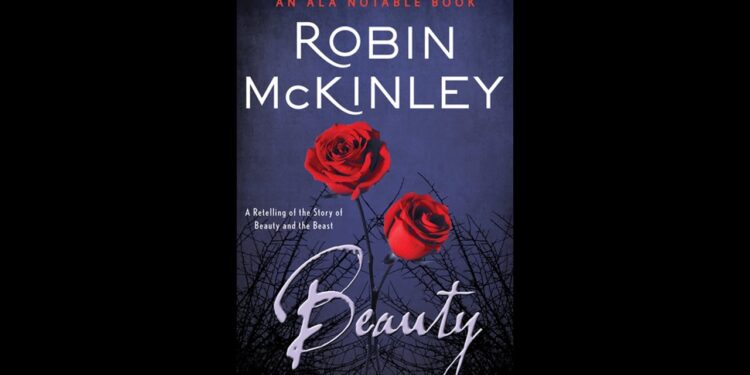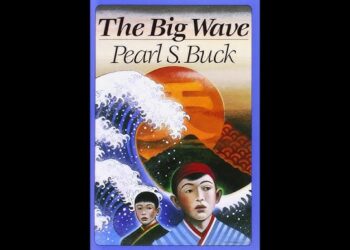Table of Contents
ToggleIntroduction
Beauty: A Retelling Of Beauty Summary By Robin McKinley In Beauty: A Retelling of Beauty and the Beast (1978), Robin McKinley offers a refreshing and captivating interpretation of the beloved classic fairy tale Beauty and the Beast. McKinley’s version, while adhering to the central themes of the original, reimagines the story with depth, complexity, and a modern sensibility. Her retelling focuses not only on the physical transformation of the Beast, but also on the emotional and psychological journeys of Beauty (the heroine), her family, and the enchanted world they inhabit.
McKinley’s novel highlights the essential themes of love, inner beauty, and selflessness, exploring the nature of true transformation and the power of sacrifice. Through the character of Beauty, McKinley presents a heroine who is intelligent, resourceful, and unassuming, counteracting the traditional portrayal of a more passive, idealized beauty. This approach gives the story a fresh perspective, blending elements of romance, magic, and self-discovery.
The novel’s atmospheric setting, emotionally charged characters, and introspective narrative make Beauty a standout within the genre of fairy tale retellings. McKinley’s prose is lush and evocative, drawing readers into a world of enchantment while grounding the story in relatable human emotions. Through her carefully crafted reinterpretation of the Beauty and the Beast tale, McKinley invites readers to reflect on themes of love, acceptance, and the journey toward emotional maturity.
Summary of Beauty: A Retelling of Beauty and the Beast
Beauty: A Retelling of Beauty and the Beast follows the journey of a young woman named Beauty, the daughter of a once-wealthy merchant whose family has fallen on hard times. In McKinley’s retelling, Beauty is not the conventionally beautiful heroine of the classic fairy tale, but rather an intelligent and modest young woman who is self-aware and unpretentious about her appearance. Her real name, as she reveals, is Honor, but her family affectionately calls her “Beauty” because she does not see herself as a particularly beautiful person. Beauty is close to her family, particularly her father and two sisters, and despite their financial hardship, she feels loved and cared for.
Beauty’s Family and the Fall from Wealth
Beauty’s family used to be wealthy, living in a grand house with servants and luxuries. However, after a series of poor investments and misfortunes, they lose their fortune, and their life of privilege is replaced with a more humble, yet still cozy, existence. Beauty’s father, a kind but somewhat distracted man, is a scholar and a dreamer, not particularly adept at managing the family’s finances. Beauty’s two older sisters, Grace and Hope, each react to the family’s loss in different ways. Grace is practical but a bit vain, while Hope is sweet-natured and often dreamy. Despite their varying temperaments, they all love one another deeply and support each other through the hardship.
Beauty herself is not initially dismayed by their fall in status, as she feels her family’s love is more important than material wealth. She is, however, concerned about the future and tries to help as much as she can. While her sisters are concerned with their appearance and social standing, Beauty is more focused on her family’s emotional well-being and practical needs.
Read more
The Beast’s Curse and the Arrival at the Castle
The heart of the novel begins when Beauty’s father, after setting off on a journey to retrieve some goods to help restore the family’s fortune, becomes lost in the woods. He stumbles upon a mysterious, seemingly abandoned castle and, seeking refuge, enters it. To his surprise, the castle is not empty but inhabited by a strange and reclusive being—an immense, terrifying creature known as the Beast. The Beast, though initially furious at the intrusion, does not harm the merchant. Instead, he asks for a favor: that the merchant return to the castle after a year and bring one of his daughters with him. The merchant agrees, though he does not fully understand the consequences of his actions.
When the merchant returns home and tells his family about his encounter with the Beast, they are frightened, and the prospect of one of them having to live with the Beast seems unimaginable. However, Beauty steps forward and offers herself in place of her father, feeling that it is her duty to protect her family, even at the cost of her own safety and happiness. She leaves her home and goes to the castle, where she meets the Beast.
The Transformation of the Beast and Beauty’s Growth
Upon arriving at the castle, Beauty finds that the Beast is not a mindless monster, but rather a deeply lonely and tortured soul, cursed by a spell. He can take the form of a Beast during the day, but he is capable of great intelligence and sensitivity when he speaks to Beauty. Over time, Beauty begins to understand that the Beast’s outer appearance is not a reflection of his true nature. Though frightening at first, the Beast gradually reveals his vulnerability and gentle spirit. He cares deeply for Beauty, though he does not express his feelings openly. He offers her everything she could possibly desire in the castle, including beauty and luxury, but Beauty is unmoved by material wealth.
As Beauty spends more time in the castle, she grows fond of the Beast. She comes to understand that the Beast’s curse can only be broken by love—genuine love that transcends appearances. Beauty’s growing affection for the Beast is mirrored by her own journey of self-discovery. She learns to look beyond the surface of things, including herself, and recognizes that true beauty lies within.
In a pivotal moment, Beauty has the opportunity to leave the castle and return to her family, but she is torn. She misses her family, but she has grown to care for the Beast. She decides to stay, and in doing so, demonstrates her inner strength and capacity for love. Her selflessness and willingness to see beyond the Beast’s exterior result in the breaking of the curse. The Beast transforms into a handsome prince, and the two are finally able to express their love for one another, solidifying the transformative power of love and sacrifice.

The Themes of Beauty: A Retelling of Beauty and the Beast
1. The Power of Love and Selflessness
One of the central themes in McKinley’s Beauty is the transformative power of love. The novel emphasizes that love is not just about physical attraction or superficial qualities, but about understanding, empathy, and sacrifice. Beauty’s decision to go to the Beast’s castle, despite her fears, is an act of selflessness that sets the stage for her eventual emotional growth. Her love for the Beast, which is rooted in her ability to look beyond appearances and see the goodness within, ultimately breaks the curse and transforms both the Beast and herself.
This theme of love as a form of self-sacrifice is also mirrored in Beauty’s relationship with her family. Beauty’s actions are motivated by a deep sense of responsibility and devotion to her loved ones, and she is willing to make great personal sacrifices to ensure their well-being. McKinley’s retelling suggests that love, when given freely and without expectation, has the power to heal and transform even the most challenging circumstances.
Read more
2. The Importance of Inner Beauty and Self-Acceptance
McKinley also explores the theme of inner beauty and the importance of self-acceptance. Beauty is an unusual heroine, in that she does not fit the traditional mold of physical beauty. She is often described as “plain” or even “unattractive,” yet she is intelligent, kind, and brave. Her journey throughout the novel is one of self-discovery, as she learns to appreciate herself not for her external appearance, but for her inner strength and qualities.
In contrast, the Beast’s physical transformation reflects the theme of looking beyond the surface. Although the Beast is outwardly monstrous, he is capable of great kindness and tenderness. His curse is a metaphor for the way society often judges people based on their appearances, without recognizing the complexities of their character. Beauty’s ability to see past the Beast’s exterior to recognize his true nature speaks to the value of looking deeper, both in others and in oneself.
3. The Role of Family and Sacrifice
The theme of family is also prominent in Beauty, particularly in Beauty’s relationship with her father and sisters. Despite their fall from wealth, Beauty is deeply devoted to her family, and it is her love for them that ultimately leads her to the Beast’s castle. She sacrifices her own happiness for the sake of her father and sisters, showing the depth of her familial love.
Similarly, Beauty’s family—particularly her father—demonstrates love and sacrifice, though they also learn lessons in letting go. Beauty’s decision to leave the family home in order to live with the Beast teaches her family members about the importance of supporting her autonomy and growth. This dynamic underscores the idea that love is not only about closeness and connection, but also about giving each other the space to grow and change.
4. The Role of Transformation and Redemption
Another key theme is the idea of transformation—not just physical, but emotional and spiritual. The Beast’s transformation into a prince is the most obvious manifestation of this theme, but it is Beauty’s transformation that drives the story. Beauty grows not only in her ability to love and empathize with others, but also in her self-awareness and understanding of her own desires. She is able to transcend her initial feelings of duty and guilt to realize that her love for the Beast is genuine.
McKinley’s retelling also suggests that redemption is possible even for those who may seem irredeemable. The Beast, under his monstrous exterior, is not a villain, but rather a deeply conflicted and troubled soul. His curse is a result of his own mistakes, but it is through the love of someone else that he is redeemed. This theme of redemption reflects McKinley’s belief in the power of love and compassion to bring about change in even the most difficult situations.

Conclusion
Robin McKinley’s Beauty: A Retelling of Beauty and the Beast is a rich, layered reinterpretation of the classic fairy tale, offering readers a nuanced exploration of love, transformation, and self-discovery. Through her characters, particularly Beauty and the Beast, McKinley challenges traditional notions of beauty and love, emphasizing the importance of inner qualities and the transformative power of selflessness.Beauty: A Retelling Of Beauty Summary By Robin McKinley
The novel is a thoughtful meditation on the complexity of relationships, the nature of sacrifice, and the journey toward understanding oneself and others. It is a beautifully written and emotionally resonant retelling that continues to captivate readers with its timeless themes and relatable characters.
Read more
(FAQ)
1. How does McKinley’s version of Beauty and the Beast differ from the original fairy tale?
McKinley’s Beauty provides a more nuanced and detailed version of the classic fairy tale. Unlike traditional portrayals of Beauty, McKinley’s Beauty is not a stereotypical “perfect” heroine but a more introspective and relatable character. The Beast, too, is not just a monstrous figure but a tragic, complex character. McKinley adds layers to the story, such as exploring the relationship between Beauty and her family, and her journey of self-discovery.Beauty: A Retelling Of Beauty Summary By Robin McKinley
2. What is the significance of Beauty’s name in the novel?
In McKinley’s retelling, Beauty’s name is both literal and symbolic. While her family affectionately calls her “Beauty” because of her kind heart, Beauty herself does not see herself as conventionally beautiful. This name highlights the novel’s central theme that beauty comes from within and is not simply about physical appearance.
3. What does the Beast represent in the novel?
The Beast in McKinley’s novel represents more than just a physical curse; he symbolizes emotional turmoil, isolation, and the consequences of one’s actions. His outwardly terrifying appearance is a reflection of the inner conflict and guilt he feels. The Beast’s transformation throughout the story represents redemption and the possibility of change, reflecting the novel’s belief in the power of love to heal and transform.
4. What role does family play in the novel?
Family is a central theme in Beauty. Beauty’s devotion to her family motivates many of her actions, and the novel explores how love and sacrifice within the family can lead to personal growth. Beauty’s relationships with her father and sisters demonstrate the importance of familial bonds and the willingness to let go in order for each member to grow.
5. Is Beauty a romance novel?
While Beauty certainly includes elements of romance, it is also much more than that. The novel is a coming-of-age story about love, self-acceptance, and personal transformation. The romance between Beauty and the Beast is an important aspect of the story, but the novel also delves into themes of family, inner strength, and the nature of true beauty.Beauty: A Retelling Of Beauty Summary By Robin McKinley
Read more

















